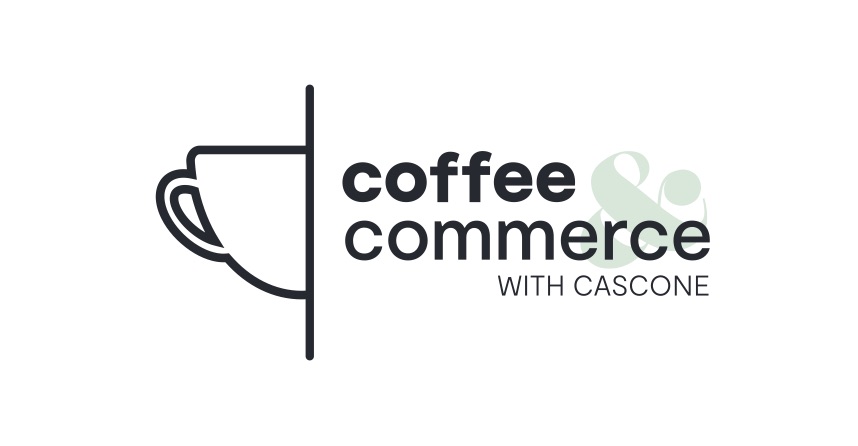
Coffee & Commerce with Cascone: Beauty’s Digital Makeover with Sephora’s Tommy Lamb
At the onset of COVID-19, one thing became clear: Retailers needed guidance. In an effort to help brands operate effectively and efficiently in this digital world, we launched Coffee & Commerce with Cascone: A biweekly series with bite-sized episodes tackling the latest in retail, featuring established marketers from today’s biggest brands.
In this week’s episode of Coffee & Commerce, Bluecore’s Senior Director of Marketing, Sarah Cascone, chats with Beauty & Luxury veteran Tommy Lamb about how brands like Sephora increased product discovery and implemented retention strategies in light of this year’s digital-first environment.
Welcome back to Coffee & Commerce with Cascone! We ended our last episode talking about how beauty has historically had an uncanny ability to drive product discovery and build loyalty. I wanted to dive deeper into this topic given our belief that retention will have an outsized impact on retail recovery. Joining me to discuss this topic today is Tommy Lamb, a veteran retail marketer with over 12 years of experience managing marketing initiatives across all channels at brands including BCBG, Lucky Brand, Teleflora and most appropriately for this episode, Dermstore and Sephora. Welcome, Tommy!
Tommy: Thanks for having me, Sarah.
Cascone: We learned in our last episode that a second-time buyer is 130% more valuable than a first-time buyer and that value compounds with each subsequent purchase, indicating a level of retention and loyalty. But the sub-vertical known for this level of retention and loyalty, beauty, is actually seeing a bit of a decline in second-time buyers anywhere from 47-6% over the last two months. I want to acknowledge that those two terms, retention and loyalty, are not always synonymous for brands. So, to start, how do you define the difference between “retention” and “loyalty?”
Tommy: At Sephora, we defined loyalty a bit differently depending on the team. If you were on the Beauty Insider team, loyalty meant you were an engaged VIB member, if you were on the retention team, loyalty meant you were a customer consistently engaging in your channel be it email, app, push, etc. Lastly in CRM, if you were engaged, you interacted across all of Sephora — store, online and ideally we spoke to you where you wanted to be communicated with, be it replenishment, discovery or how-to’s. But overall, what we were all striving for was to get customers to buy again and again and again, while also recognizing that once a buyer reached their Nth purchase, they were generally no longer going to be swayed by many of our marketing messages — they know what they want and when they want it and our job is to deliver.
Cascone: That’s an important factor to recognize. So tell me more about the shoppers who hadn’t reached that Nth purchase yet. I know replenishment is a key strategy here, so how did you approach it?
Tommy: We had a classic replenishment program that was across over 20 key categories leveraging multiple predictive algorithms to meet the customer just before they thought about replacing their nearly empty product, but we realized that it wasn’t driving as much incremental revenue, as the overall replenishment rate hadn’t grown as much as we wanted. We instead saw more success with our “next best product” efforts. Any time we could get a client to convert to another category, it was a big win for us because, as you would expect, cross-category buyers are more loyal and have a higher lifetime value or “CLV.” We took this concept and built a highly targeted custom data model to recommend a next best purchase in a new category based on common buying patterns. We saw a 6.3% increase in conversions per client and an 8.4% increase in revenue per client. I think a huge reason for this campaign’s success was its ability to balance replenishment with product discovery.
Cascone: That’s definitely a great way to naturally facilitate the discovery of new products and get the shopper to buy again. Where did that leave your more traditional replenishment program?
Tommy: That’s something we were testing extensively. We did a lip replenishment test to discover if there were high-performing lip products at a SKU level that were not getting enough exposure from a category perspective. If the SKU had a high replenishment rate while the category was low, we knew to prioritize promotions and campaigns accordingly.
Cascone: How did that campaign and the next-best product campaign impact your repeat purchase rates?
Tommy: These programs are the backbone of our replenishment program and continue to improve rates despite the uncertain times we live in. They have been essential not only to our most devoted customers and their repeat purchases, but also to our new clients as they explore the world of Sephora from their home. This is where we try and bridge the gap from in-store expertise and guide them to their next discovery or favorite brand via digital channels.
Cascone: So it seems there’s an opportunity for beauty brands to define what retention and loyalty means to them, but it should be anchored in the ability to drive repeat purchases. And I do feel the concept of loyalty is often associated with a level of affinity to a brand that is a bit more complex than sheer number of purchases. Before we close, I’d love to hear your thoughts about the future of the beauty industry. As we continue to shift to this digital-first/all-direct-to-consumer world, what trend do you think will drive beauty going into 2021 and beyond?
Tommy: We have seen substantial shifts in normal buying patterns and in otherwise more tepid categories. Skincare and hair are really hot right now as more and more people opt for self-care at home. Skin and hair also make sense given the increase in digital meetings as well as time spent outside. Think of where masks sit on the face. Good hair and skin are essential.
Sustainability and clean beauty is obviously a big priority for brands, subscription boxes continue to diversify and companies like Sephora are committing to the 15% pledge of including more black-owned brands, as well as replication of the in-store experience online to anchor these new clients to the digital space and nurture that relationship in a helpful way
Ready for More?
Ready for more insights and analysis on the latest trends? Click here for the full episode library of Coffee & Commerce with Cascone.






